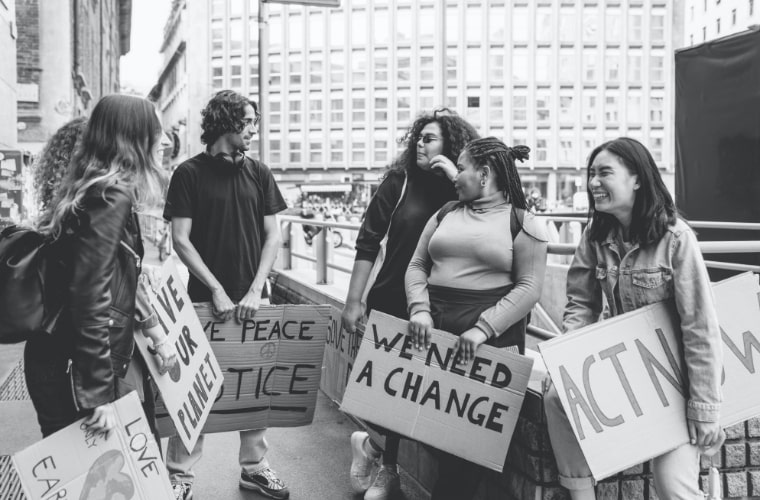Imagining
Liberatory Education Futures
Unlocking Our Imaginations
Imagine a world in which each learner is unconstrained by systems and structures of oppression. Creating such a world might seem impossible, yet making education liberatory is the most pressing challenge that education stakeholders face as we look to its future. If we do not join together to face our current and developing realities head on, we will not create better futures for each learner. Moreover, our inaction will exacerbate historic and systemic inequities, bringing education systems to the brink of collapse.
This forecast describes possible futures for anti-oppressive, liberatory education systems. As professor and activist bell hooks wrote, “What we cannot imagine cannot come into being” (hooks, 1999). In that spirit, this forecast follows a long line of imagining fresh approaches to teaching and learning and liberatory futures. These approaches include, but are not limited to, freedom dreaming, futures thinking, visioning and liberatory design.
Whatever the approach, it is crucial that our efforts to imagine liberatory education futures be participatory and inclusive. We must authentically collaborate with others to explore what could be possible for education – and then consider how to bring about the possibilities that we all would like to see and avert those that we would not.
Chapter 1: Confronting Past, Present and Future Inertia
Major disruptions are creating shared challenges while education systems perpetuate inequity
Chapter 2: Two Critical Uncertainties
Questions about social cohesion and the responsiveness of public institutions will shape future possibilities
Chapter 3: Imagining Futures for Liberatory Education
Four stories about possible futures can help us imagine what liberatory education could look like
Chapter 4: Insights and Implications
Current tensions and dilemmas will impact the growth of liberatory education
Chapter 5: The Future Starts Now
Foundational steps for moving toward liberatory education




